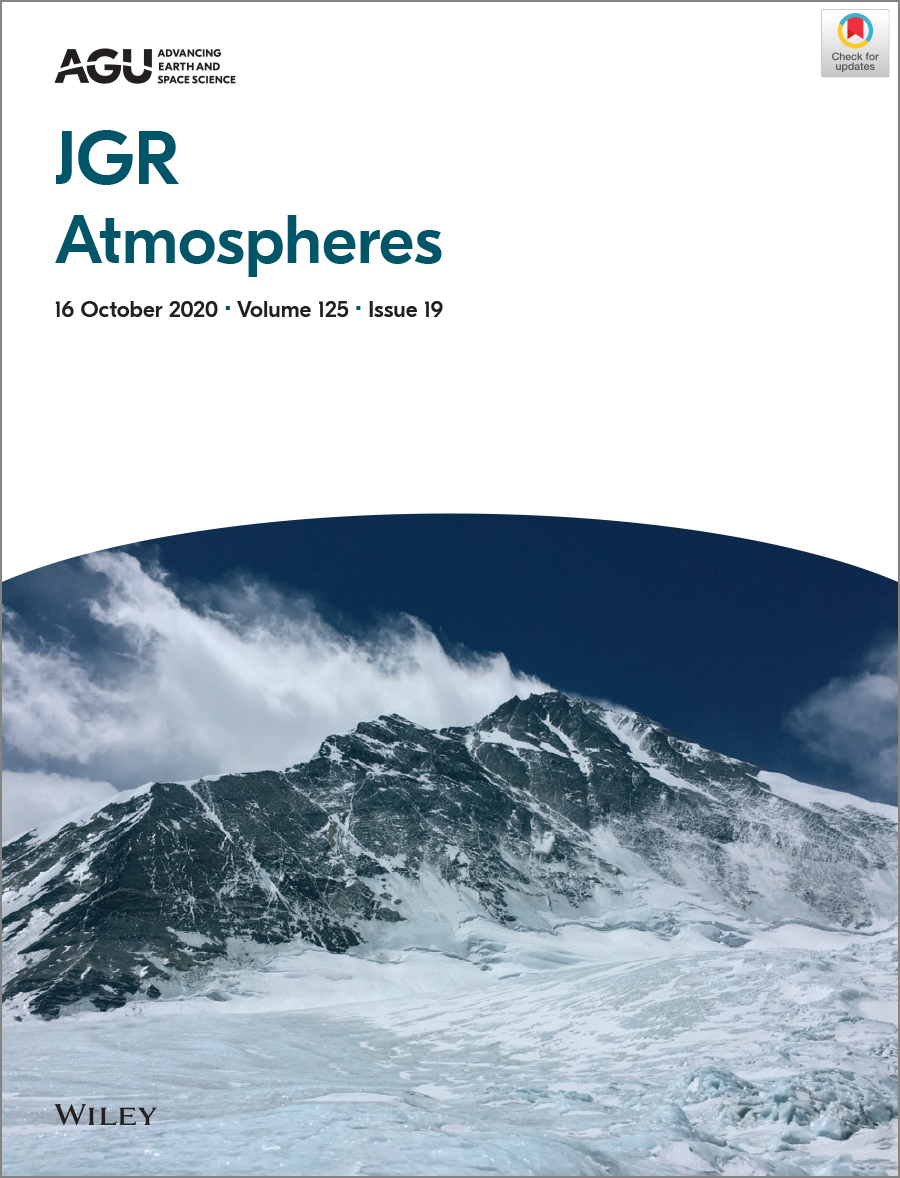Tibetan Snow, Ice Pack New Insights into Environmental, Climatic Change
Novel isotope analysis of nitrate in aerosols, snow, ice and runoff water expands knowledge of complicated nitrogen cycle
Published Date
By:
- Cynthia Dillon
Share This:
Article Content
Most of the planet’s glaciers exist in the Himalayas and the Tibetan Plateau. This area, with thousands of lakes, is also known as the Third Pole (TP). Essentially a massive water reservoir, the TP provides water and food security for billions of people in Asia. Many studies have linked air pollutants from South Asia to significant environmental and climatic impacts in the region and beyond.

In Lin et al., complete isotope compositions of atmospherically deposited nitrate in glacialhydrologic systems across the Tibetan Plateau including Mount Everest are reported. The photo of Mount Everest was taken from the East Rongbuk glacier during the 2016 Mount Everest Scientific Expedition Campaign. Image courtesy of Mang Lin.
Chemically, the isotopic makeup of nitrate deposited through the atmosphere in bodies of ice, like glaciers, plays a central role in identifying environmental and climatic changes—past and present. Recent research by UC San Diego’s Mark Thiemens, Tokyo Institute of Technology’s Mang Lin and Naohiro Yoshida and scientists from the Chinese Academy of Sciences (CAS) provides an overview of the complete isotopic compositions of nitrate in aerosol, snow, ice and water samples collected across sub-regions of the TP. The scientists’ findings, published recently in Journal of Geophysical Research Atmospheres as a cover article, narrow down the complex nitrogen cycles at work in the atmosphere, cryosphere, hydrosphere, and, potentially, the biosphere.
Thiemens, a distinguished professor of chemistry and biochemistry with expertise in atmospheric chemistry, explained that ice bodies in the TP serve as an archive of the past changes of atmospheric and climatic conditions in this important region.
“Because of the unique location of the TP (at mid-latitude), ice cores from this region record valuable paleoclimate information that cannot be obtained from polar regions and bridges the high‐ and low‐latitude records for establishing a global paleoclimate perspective,” he said.

Pictures showing the sampling sites at Mt. Everest area in the Southern TP for (a) snow, (b) serac ice, (c) lake water, and (d) river runoff water samples. Image courtesy of Mang Lin, Mark Thiemens, et al.
Despite the importance of the TP, studies of atmospheric nitrate isotope ratios over the region are limited. Yet the high sensitivity of nitrate values to atmospheric oxidant reactions makes triple isotopic analysis of nitrate in the atmosphere and ice samples a unique way to track atmospheric chemical processes over time. Additionally, since atmospheric nitrate is the only source of nitrate that possesses unique oxygen isotopic values, its composition offers a novel tracer for quantifying its contribution to various ecosystems—from deserts to forests. The technique for doing this was discovered and developed at UC San Diego in the PhD work of Greg Michalski (’99, BA, environmental chemistry; ’00, MA, ’03, PhD, chemistry), now a professor at Purdue University.
“As a major component of anthropogenic pollution and nitrogen nutrients, nitrate in snow, ice and runoff water over the TP plays an important role in hydrological ecosystems over not only the TP but also Asia,” said Lin (’18, PhD, chemistry), first author of the research paper, a professor with the Guangzhou Institute of Geochemistry at CAS and a UC San Diego alumnus who won the Chancellor’s Dissertation Medal as a PhD student researching the same topic in the Thiemens Lab. “The TP is the world's highest and largest plateau, and it strongly influences the Asian monsoon and global atmospheric circulation patterns through dynamical and thermal effects.”

Scatter plots of δ15N, δ18O, and Δ17O for snow samples collected in 2016 spring across the TP. The abundance of nitrogen-15, with an extra neutron, is far more rare than nitrogen-14. The enrichment of nitrogen-15 relative to the nitrogen gas in Earth's atmosphere is denoted as δ15N and is linked to biological and photochemical processes. It is shown that δ15N values of nitrate over the Northern, Central and Southern TP differ significantly. Figure courtesy of Mang Lin, Mark Thiemens, et al.
To conduct their study, the scientists used snow and ice samples collected across Tibet. They melted the samples at room temperature, avoiding exposure to sunlight. All water samples were passed through quartz microfiber filters to remove insoluble materials. They also dissolved filter papers with aerosol samples in pure water and removed insoluble materials. The solution was used for nitrate/nitrite concentration and isotope analysis with an ion chromatograph and an isotope ratio mass spectrometer, tools used for water chemistry and isotope analysis, respectively.
According to the scientists, their research presents new complete isotope analysis of nitrate in aerosol, snow, ice and runoff water samples collected across sub-regions of the TP, enriching the knowledge of the nitrogen cycle over the region.
“The new measurements cover a large geographic area and reveal a spatially and temporally heterogeneous pattern of nitrate isotopic compositions,” explained Thiemens. “Our study sheds fresh light onto the complicated atmospheric and hydrologic nitrogen cycle over the TP in the present day and potentially in the past.”
The researchers offer suggestions for further investigation strategies, noting the challenges of the remoteness and difficulty of sampling in the TP region.
This research was supported by the National Natural Science Foundation of China (grant nos. 41630754 and 41721091); the second Tibetan Plateau Scientific Expedition and Research Program (grant no. 2019QZKK0605); the Japan Society for the Promotion of Science (JSPS) KAKENHI (grant nos. JP18F18113, JP18K19850, JP19H01143, JP20H04305, JP16H05884 and JP17H06105 from the Ministry of Education, Culture, Sports, Science and Technology) and a JSPS Postdoctoral Fellowship for Research in Japan.
Share This:
You May Also Like
Stay in the Know
Keep up with all the latest from UC San Diego. Subscribe to the newsletter today.



